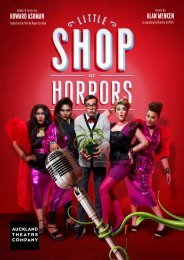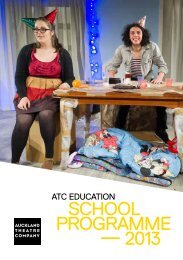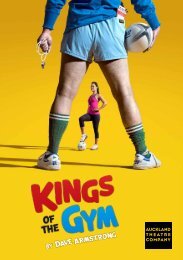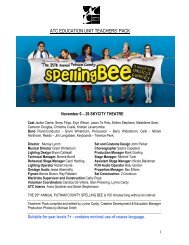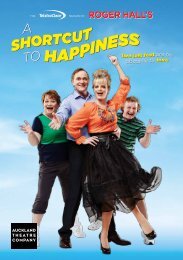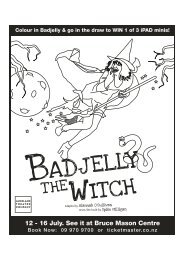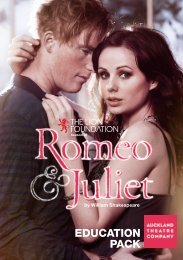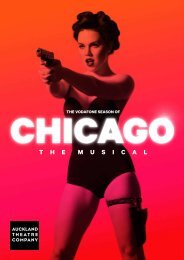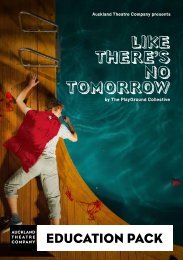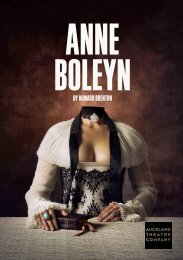Create successful ePaper yourself
Turn your PDF publications into a flip-book with our unique Google optimized e-Paper software.
mARK<br />
RoTHKo<br />
STILL<br />
RocKS<br />
NeW YoRK<br />
<strong>By</strong> Sweeney Vesty<br />
A “lost” painting<br />
by Mark Rothko<br />
sold at Christies<br />
in New York<br />
in May for<br />
US$33.5M, well<br />
above the presale<br />
estimate<br />
of $18–22M,<br />
injecting an<br />
unexpected shot<br />
of excitement<br />
into the current<br />
auction season.<br />
The abstract<br />
expressionist<br />
work, “Untitled<br />
No. 17”, features<br />
Rothko’s signature<br />
flat colour fields<br />
—in this case<br />
uneven horizontal<br />
blocks of red and<br />
pink on a gold<br />
background.<br />
The 1961 work<br />
was originally<br />
bought directly<br />
from the artist by<br />
a private collector<br />
and had not been<br />
seen since 1965.<br />
It was thought<br />
that Rothko<br />
had created<br />
835 works.<br />
Now, plus one.<br />
In a twist that Rothko would<br />
have found distasteful, the<br />
top lot at Christies was a<br />
work by Andy Warhol.<br />
The 1963–64 ‘Self-Portrait,’ of<br />
four photo-booth-strip images<br />
of Warhol in different shades<br />
of blue, fetched $38.4m after<br />
a torturous (some dealers said<br />
tedious) bidding war.<br />
Where Warhol’s pop art<br />
reflects the Zeitgeist—<br />
Hollywood royalty, the<br />
iconography of Campbells and<br />
Coke or a dollar bill—Rothko<br />
uses abstract forms and<br />
colour to evoke the deepest<br />
human emotions or even<br />
spiritual experiences.<br />
“These are paintings that<br />
seem to exist on the skin<br />
inside an eyelid,” writes The<br />
Guardian’s Jonathan Jones.<br />
“They are what you imagine<br />
might be the last lights, the<br />
final flickers of colour that<br />
register in a mind closing<br />
down.”<br />
Rothko agreed in the<br />
late 1950s to a lucrative<br />
commission to paint huge<br />
murals for the Four Seasons<br />
restaurant in the Seagram<br />
building in New York, at the<br />
epicentre of New York society,<br />
celebrity, money, and power.<br />
After a lifetime spent as an<br />
unknown, unsuccessful artist,<br />
Rothko had the chance to<br />
decorate the most expensive<br />
restaurant in New York. The<br />
outsider in him saw it as an<br />
opportunity for subversion.<br />
He told Harper’s Magazine<br />
editor <strong>John</strong> Fischer the<br />
restaurant was “a place<br />
where the richest bastards in<br />
New York will come to feed<br />
and show off”.<br />
“I hope to ruin the appetite of<br />
every son of a bitch who ever<br />
eats in that room,” Rothko<br />
is said to have gloated, with<br />
paintings that will make diners<br />
“feel that they are trapped in a<br />
room where all the doors and<br />
windows are bricked up”.<br />
But after Rothko visited the<br />
restaurant he backed out of<br />
the project, and repaid his<br />
advance, reportedly saying,<br />
“Anybody who will eat that<br />
kind of food for those kind<br />
of prices will never look at a<br />
painting of mine.” (The four<br />
paintings hang in a dedicated<br />
space at the Tate Modern in<br />
London).<br />
What followed is all part of an<br />
immortal story, and Rothko’s<br />
fears about the chattering<br />
classes would not be<br />
diminished in this current day.<br />
It’s Spring in New York and<br />
while the art auctions bloom<br />
the Four Seasons continues<br />
to pull in the city’s elite. In<br />
his column in The New York<br />
Observer, the restaurant’s<br />
co-owner and maître d’, the<br />
irrepressible Julian Niccolini<br />
chronicles the champagne,<br />
caviar and lobster he serves<br />
Martha Stewart, Henry<br />
Kissinger, Anna Wintour,<br />
Bill Clinton, George Soros,<br />
Jon Hunstman and other<br />
supernovas. Drunken diners<br />
and angry royalty are the order<br />
of the day. Life—and lunch<br />
—go on. And Mark Rothko is<br />
still of the moment.<br />
New York-based art lovers Jane<br />
Vesty and Brian Sweeney run a<br />
global strategic communications<br />
consultancy. Jane Vesty was on the<br />
Board of the ATC from July 2004 till<br />
September 2006.<br />
© Jennifer Calais Smith, The Four Seasons, www.fourseasonsrestaurant.com




